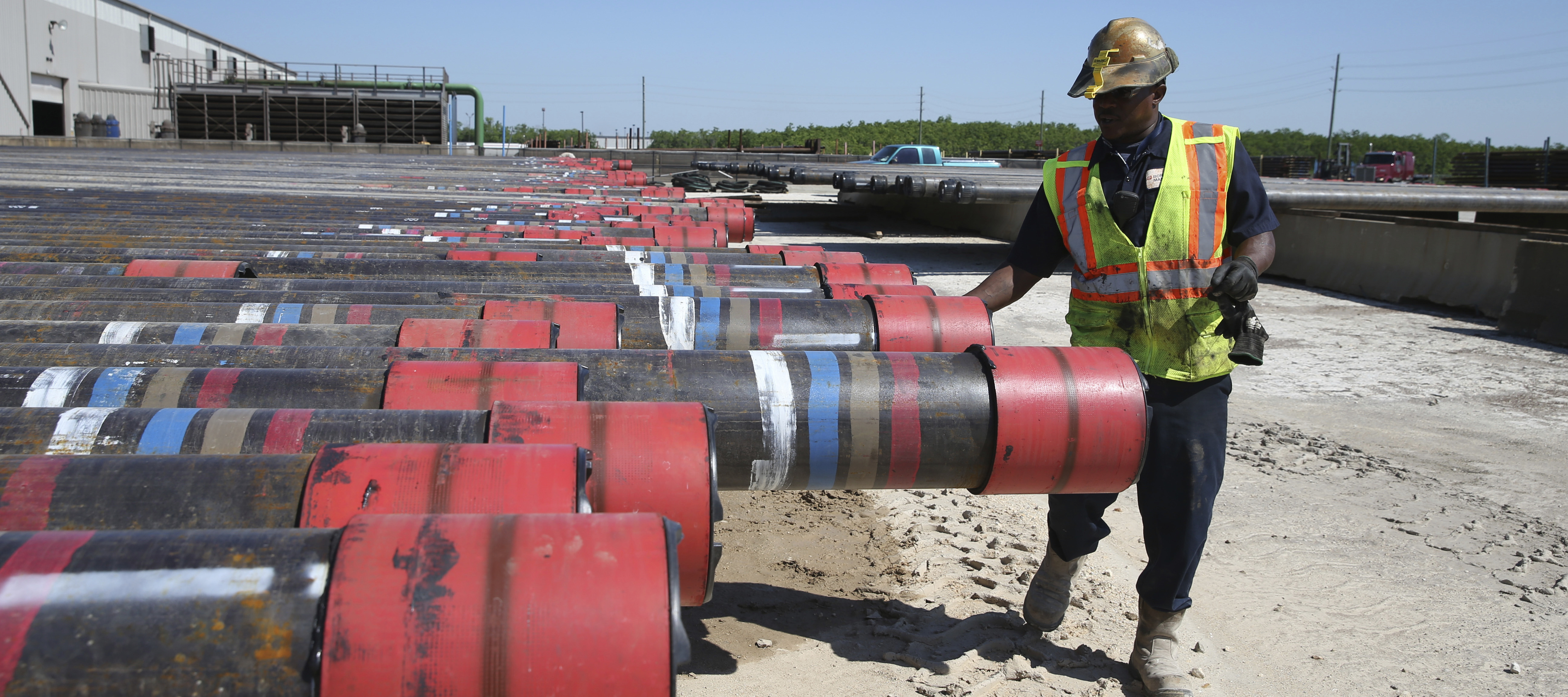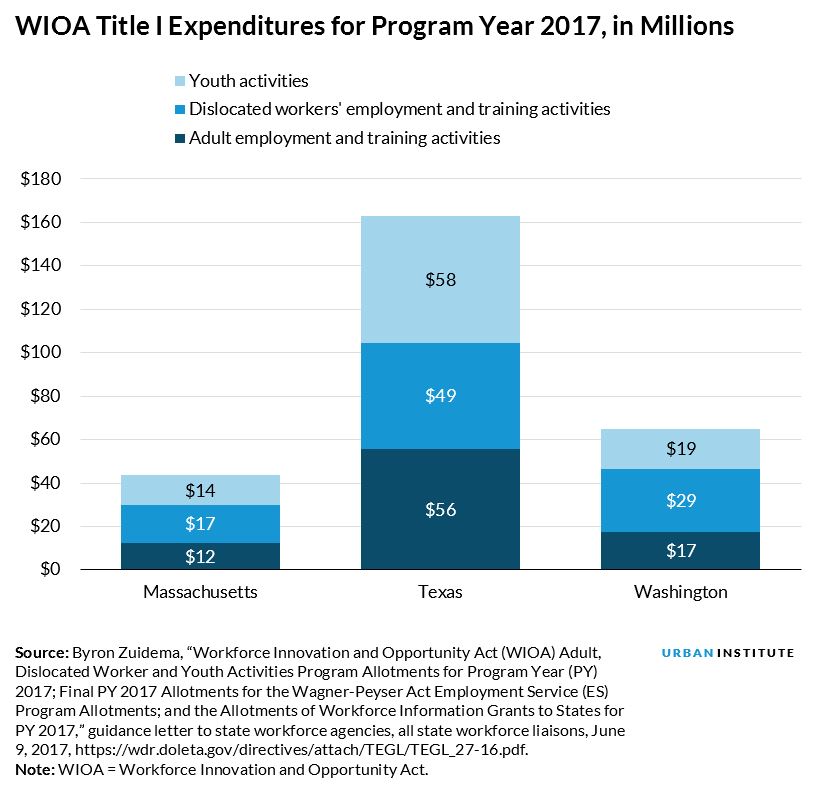
<p>Taurice Jones inspects steel pipes as part of quality control at the Borusan Mannesmann plant in Baytown, Texas, on Monday, April 23, 2018. Photo by Loren Elliott/AP Photo.</p>
Amid a surplus of jobs and a bustling economy, American workers need training and skill development to ensure economic growth doesn’t leave them behind.
Funding under the Workforce Innovation and Opportunity Act (WIOA) of 2014 is the largest federal investment in workforce development, providing states and localities flexibility while emphasizing “upskilling.” WIOA’s Title I disburses funds to states to support local programs for adults, dislocated workers, and youth.
Some states and local agencies are augmenting federal funding with other public and private investments. Examining expenditures on occupational training in Massachusetts, Texas, and Washington provides a snapshot of state-level investments in training.
These geographically diverse states also have:
- large projected increases in middle-skill job openings (jobs that require education beyond high school but not a four-year degree);
- federal, state, or local funding committed to innovative strategies or past participation in innovative regional or statewide middle-skill training partnerships; and
- diverse state-level funding structures.
How much federal funding did these states receive?
For program year 2017, federal expenditures on WIOA Title I Adult and Dislocated Worker Employment and Training Activities and Youth Activities is $2.67 billion for all 50 states and Puerto Rico. Of this amount, $807.1 million is allocated for WIOA adult programs, $1.013 billion is allocated to Dislocated Workers Program activities, and $851.4 million is allocated to youth programs.
In annual federal allotments for all WIOA Title I programs in fiscal year 2017,
- Texas received $163 million,
- Washington received $65 million, and
- Massachusetts received $44 million.
Adult program spending is $56 million in Texas, $17 million in Washington, and $12 million in Massachusetts.
Forty-five percent of Washington’s WIOA Title I funds are allocated for dislocated workers, indicating the state’s greater need for these services compared with Massachusetts (39 percent) and Texas (30 percent). Thirty-six percent of Texas WIOA Title I funds are directed toward youth, compared with 32 percent for Massachusetts and 29 percent for Washington.

How much do these states spend on major statewide job training programs?
Compared with federal WIOA Title I expenditures, these three states spent a substantial amount of other public dollars on workforce development training in fiscal year 2017:
- In Massachusetts, expenditures for three state-funded, statewide programs were about $56 million, or 128 percent of the $44 million in WIOA Title I federal funding.
- In Texas, expenditures for three state-funded, statewide programs were $49 million, or 30 percent of the $163 million in WIOA Title I federal funding.
- In Washington, expenditures for six state-funded, statewide programs we identified were $59 million, or 91 percent of the $65 million in WIOA Title I federal funding.

State and local workforce development entities help manage public and private funding for job training. Although WIOA is a major source of federal funding for job training, state funding sometimes surpasses federal funding.
Many local workforce development boards also receive county and city funds and seek funding from private sources, such as employers, foundations, and corporate philanthropy. As one local workforce development board respondent put it, “Where we derive our funds shouldn’t dictate who we are.”
State and local workforce development entities across the country can examine the varying landscape for funding training programs in Massachusetts, Texas, and Washington to improve access to workforce development programs for people seeking to gain skills, advance their careers, and achieve financial stability.
Let’s build a future where everyone, everywhere has the opportunity and power to thrive
Urban is more determined than ever to partner with changemakers to unlock opportunities that give people across the country a fair shot at reaching their fullest potential. Invest in Urban to power this type of work.